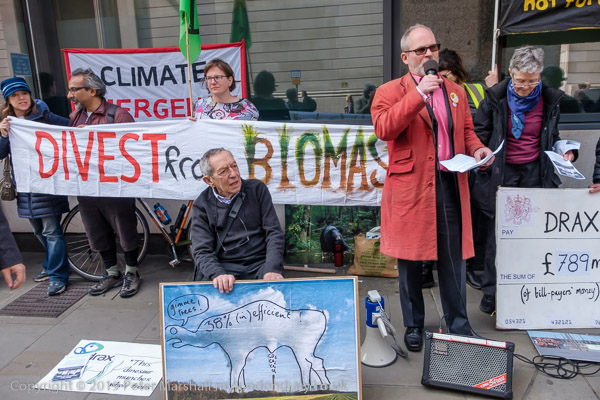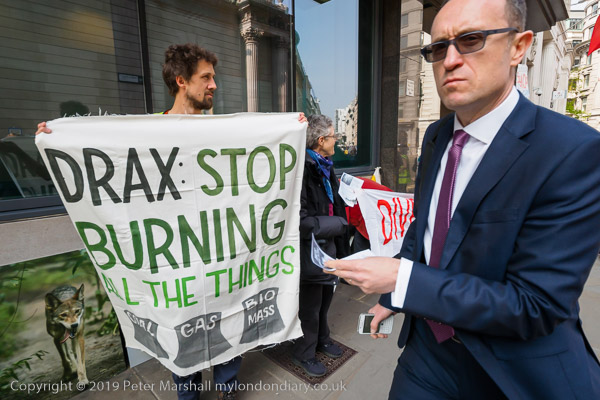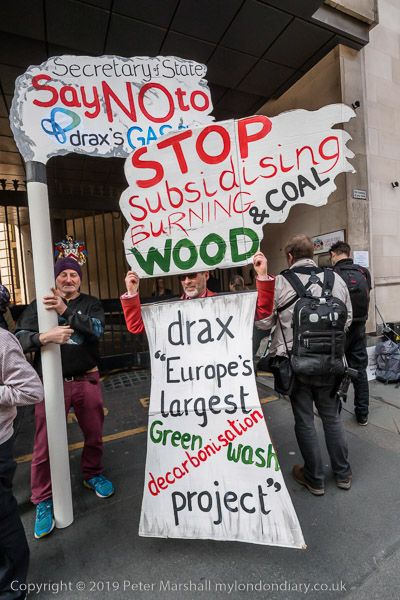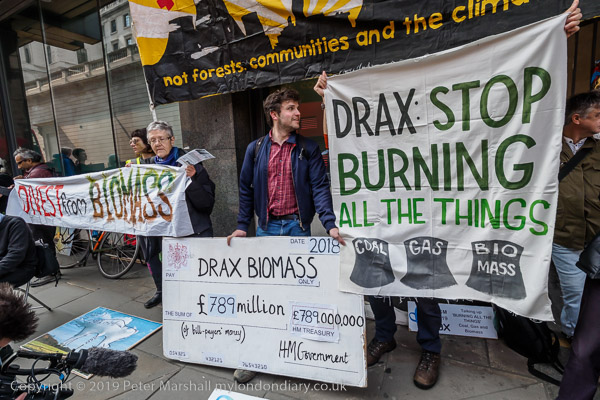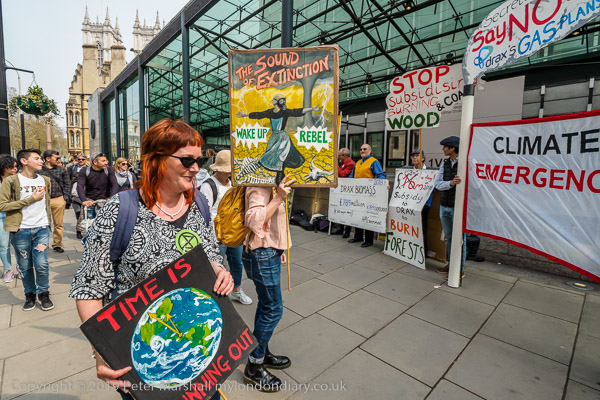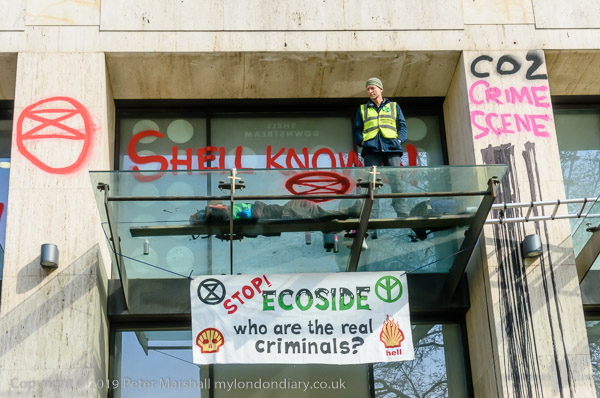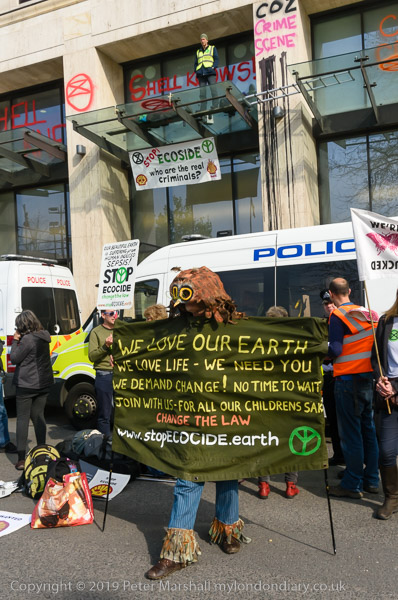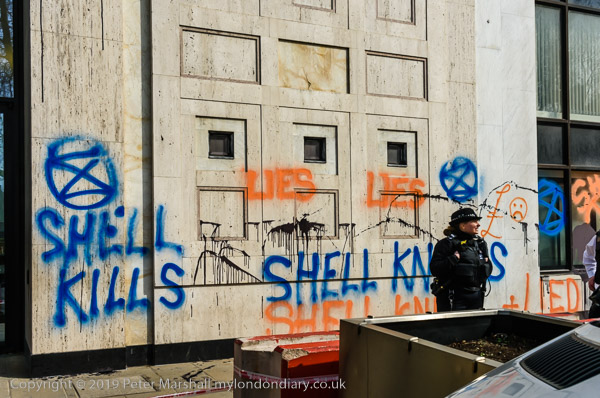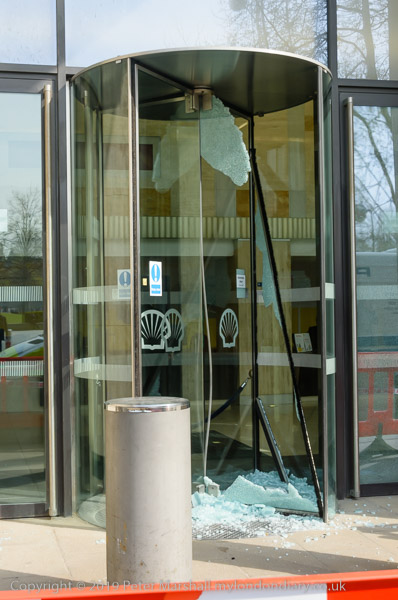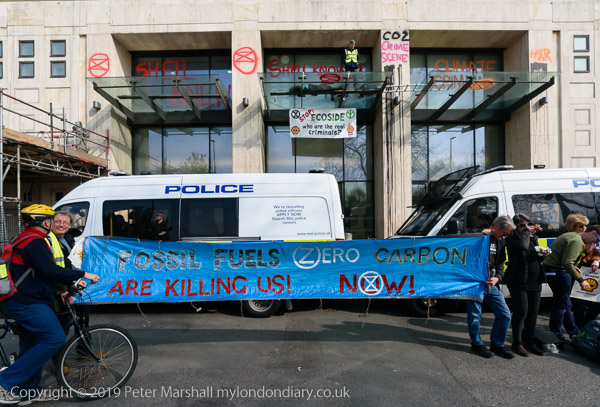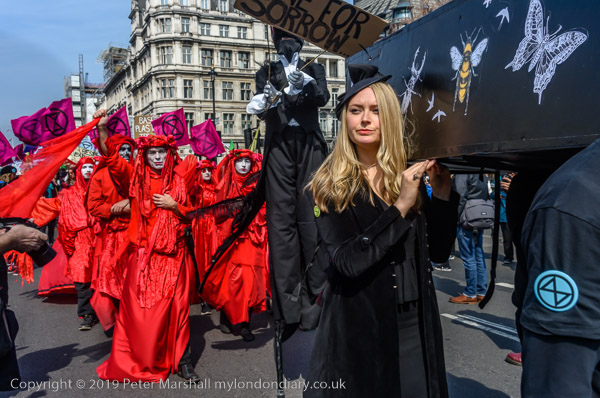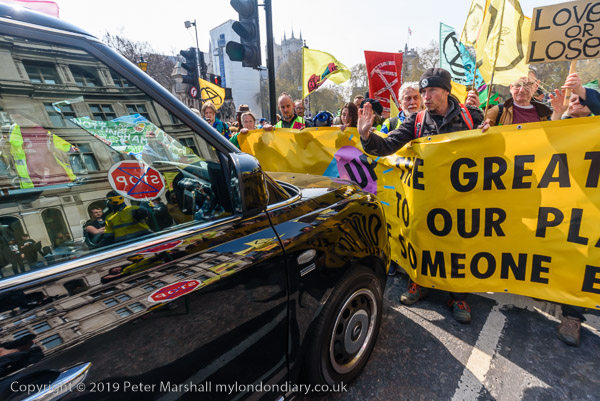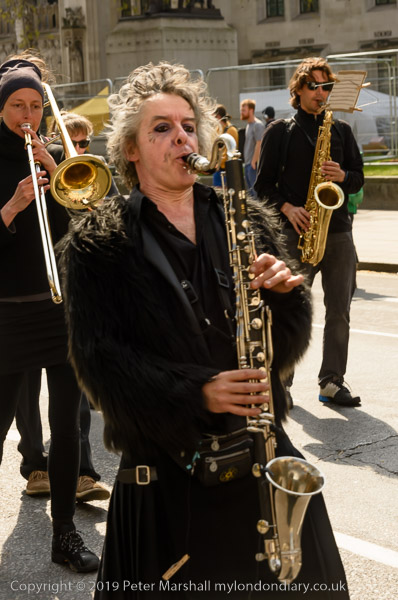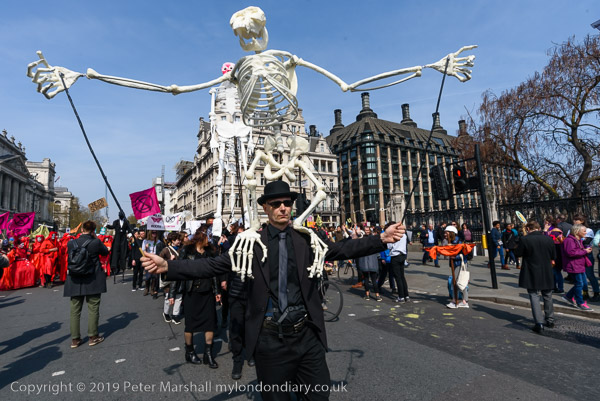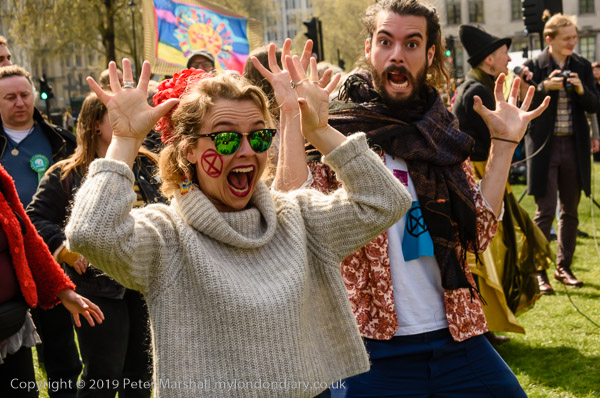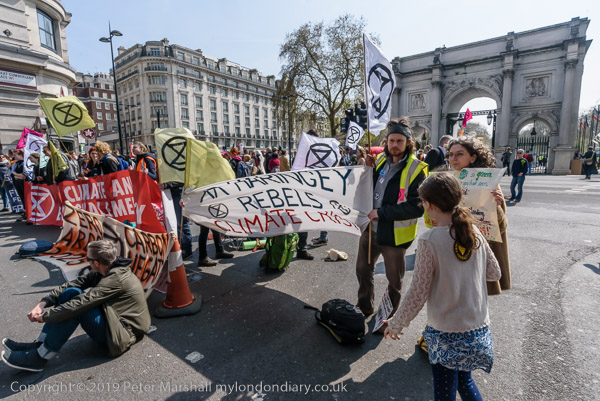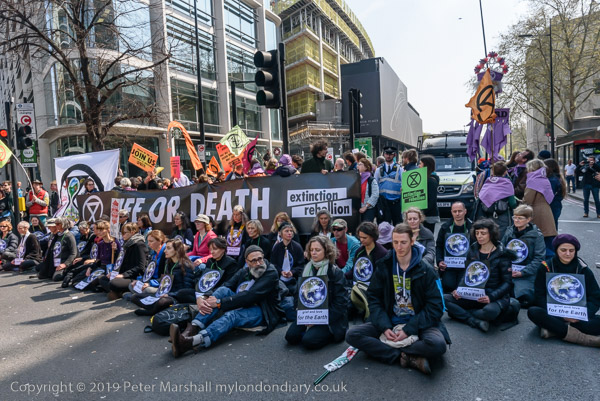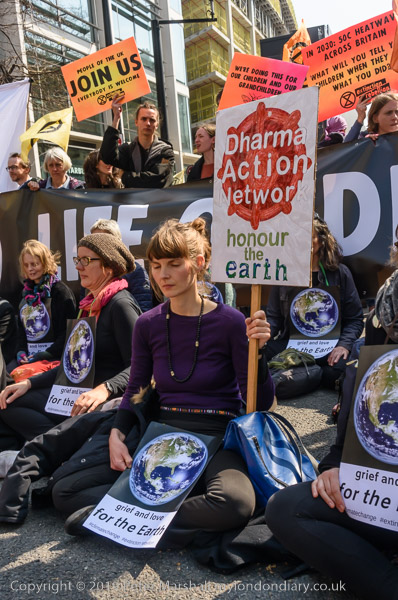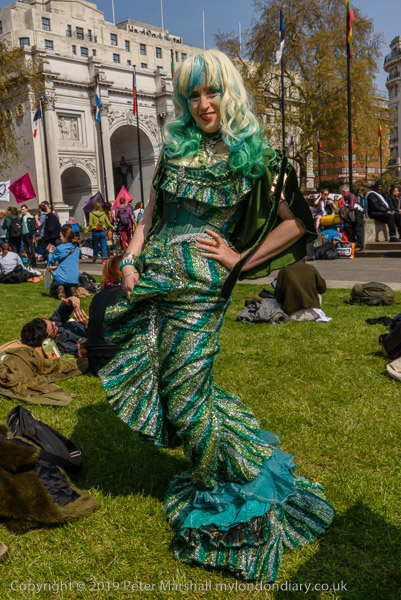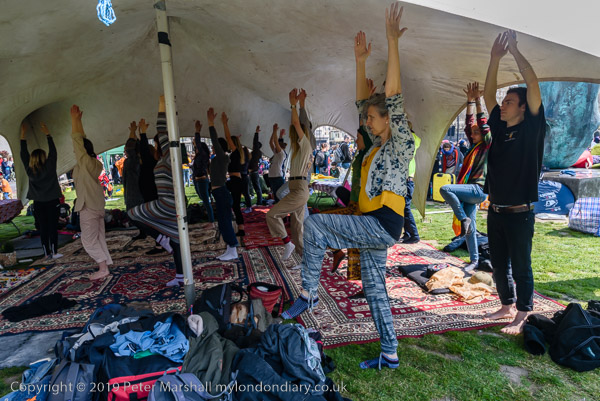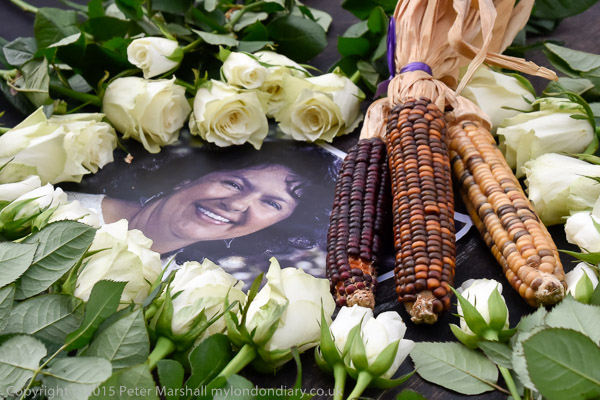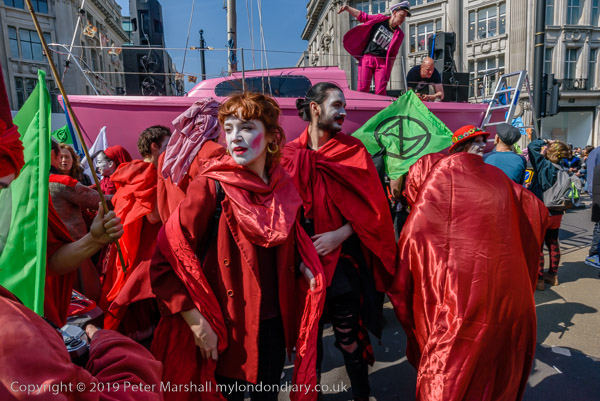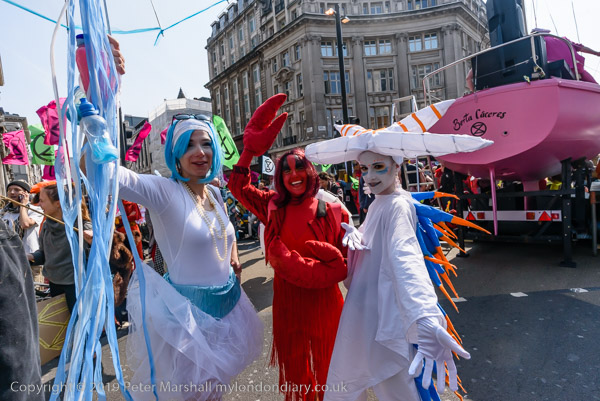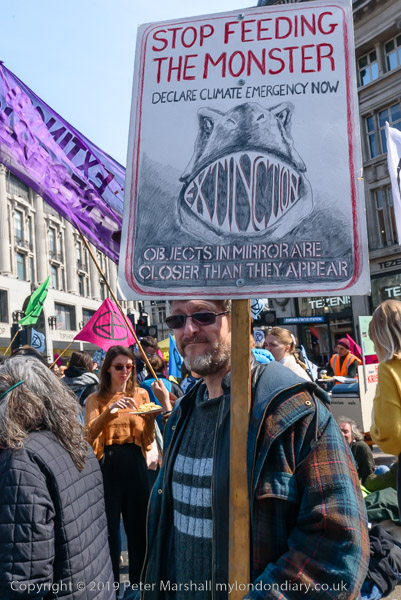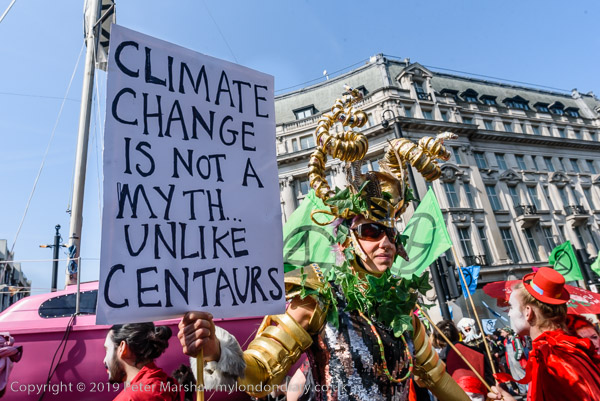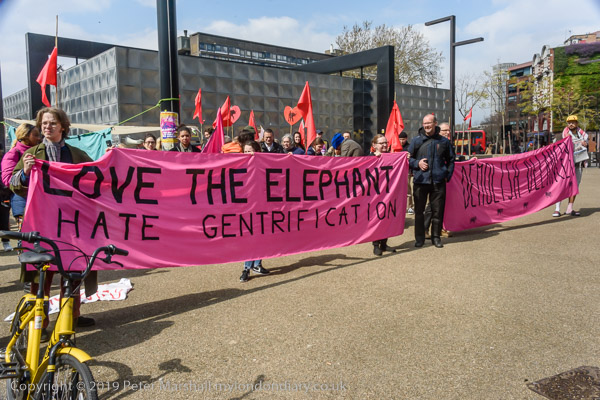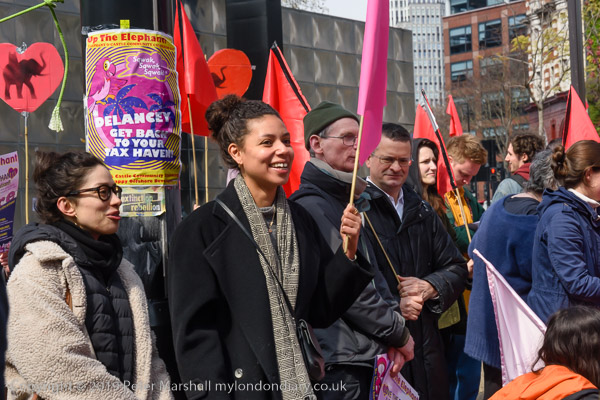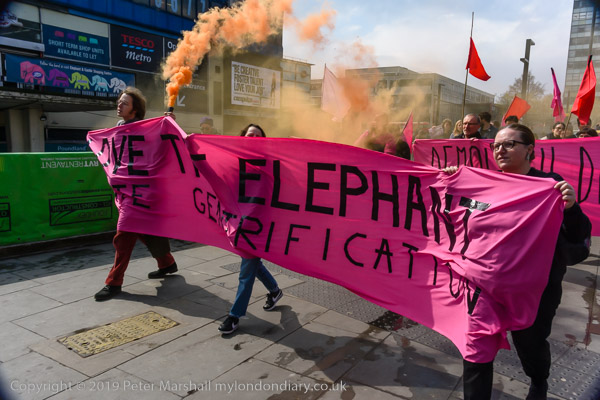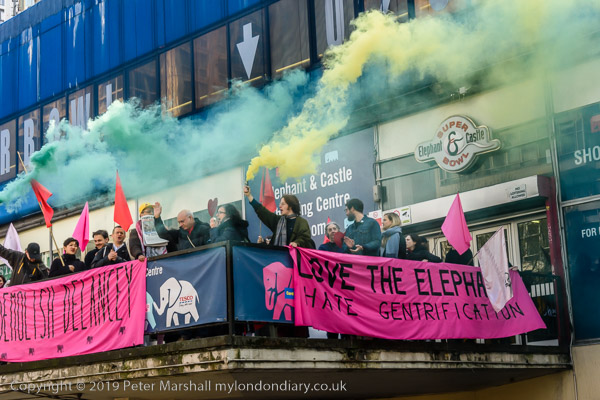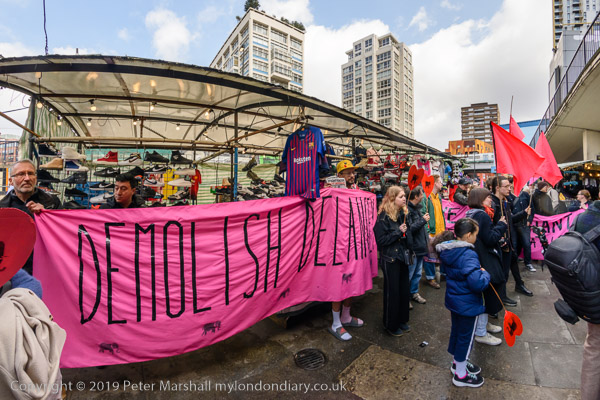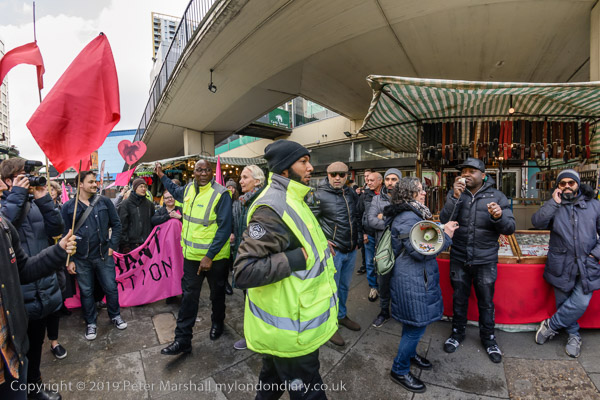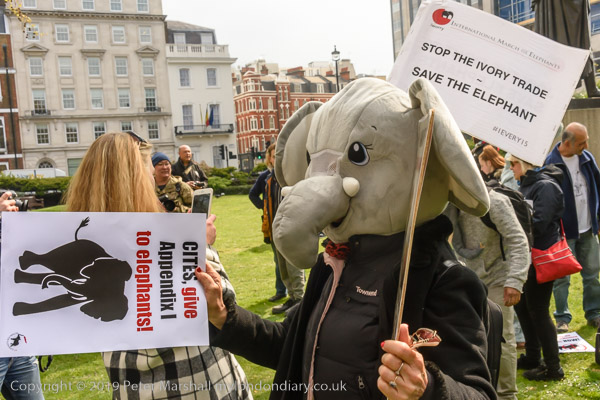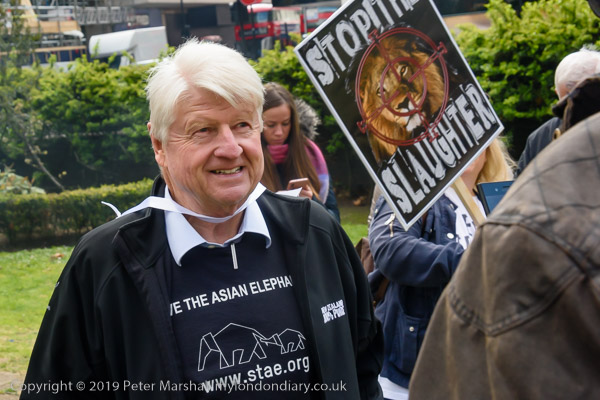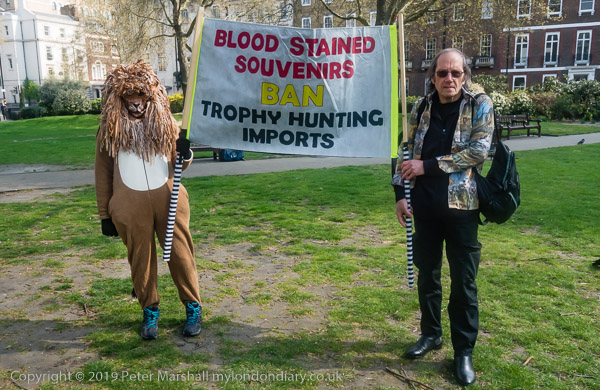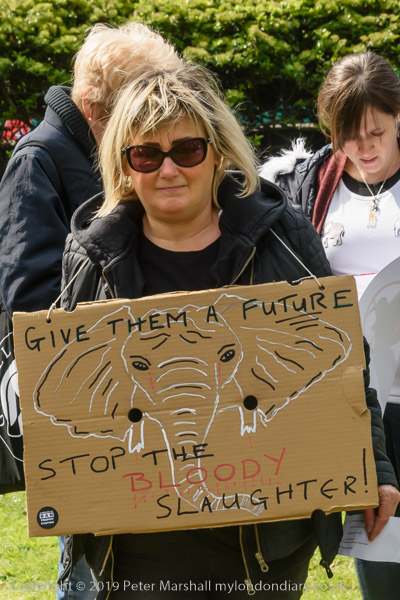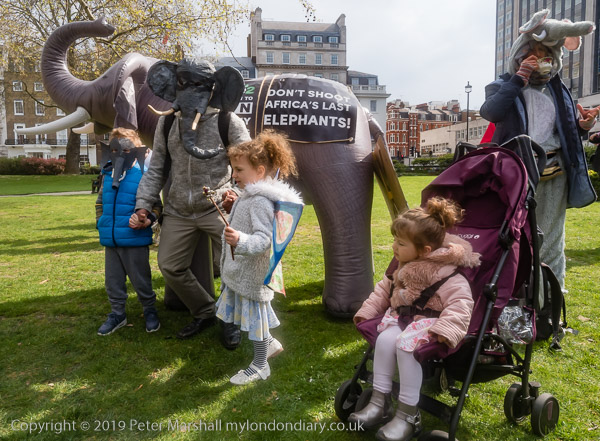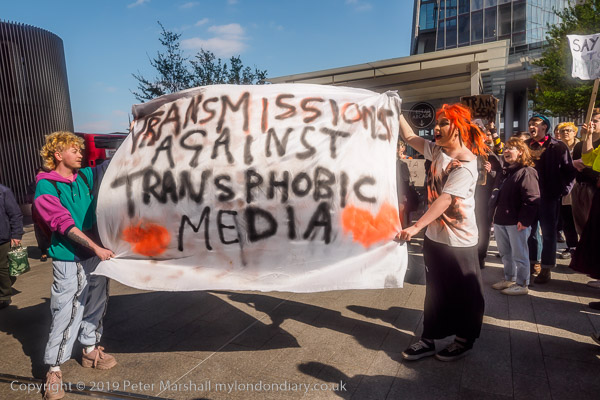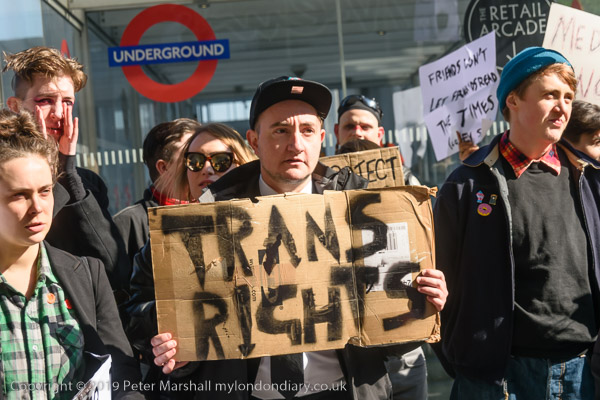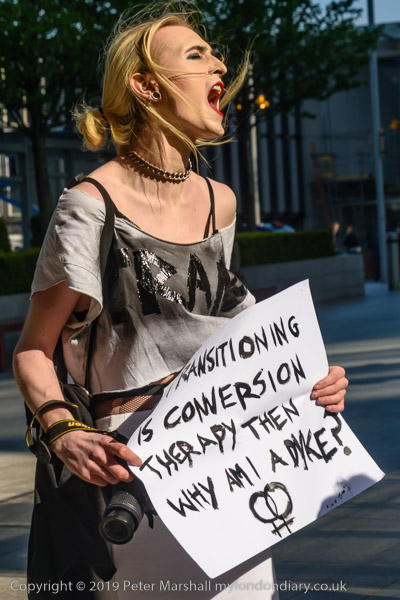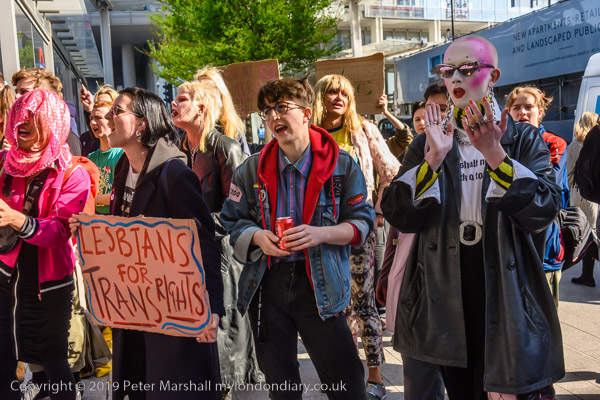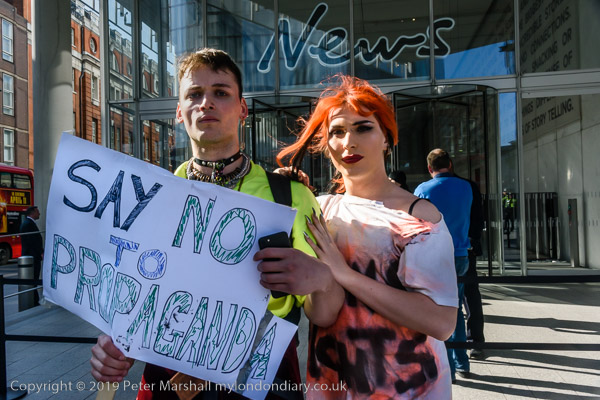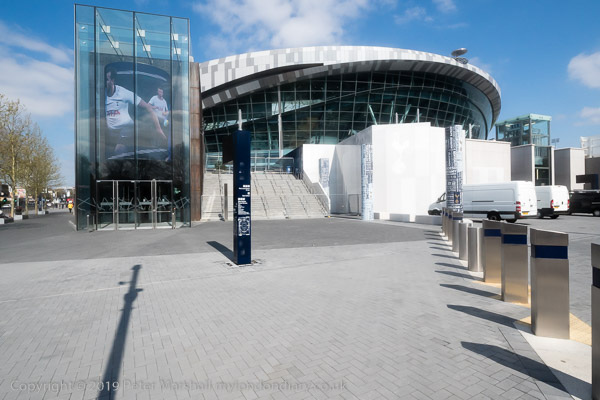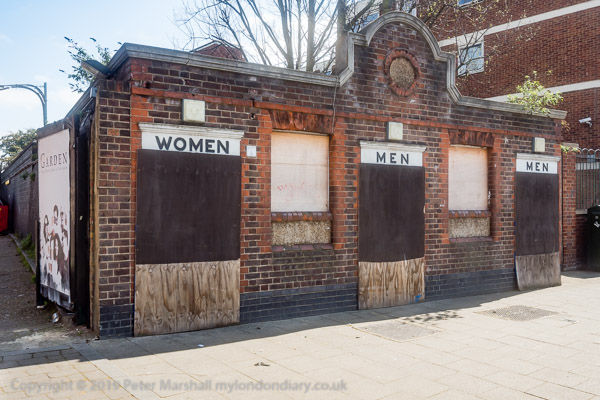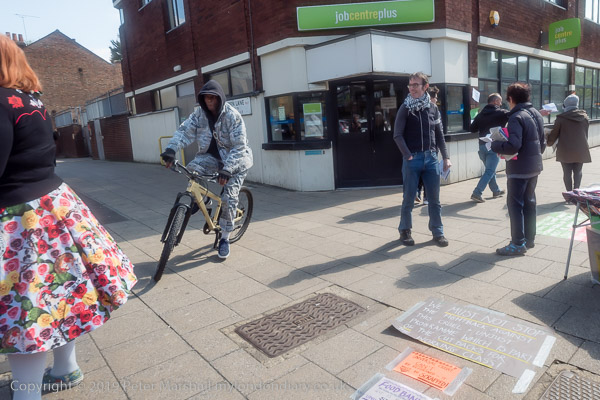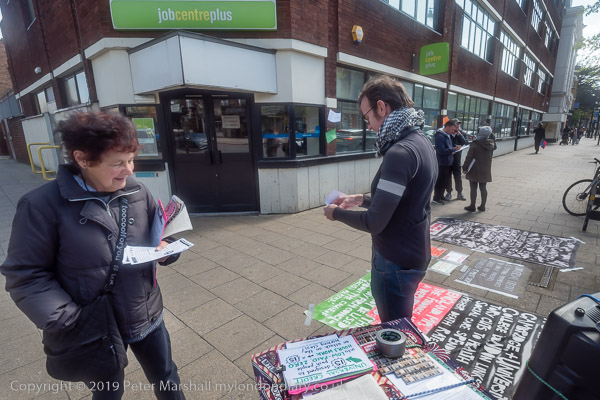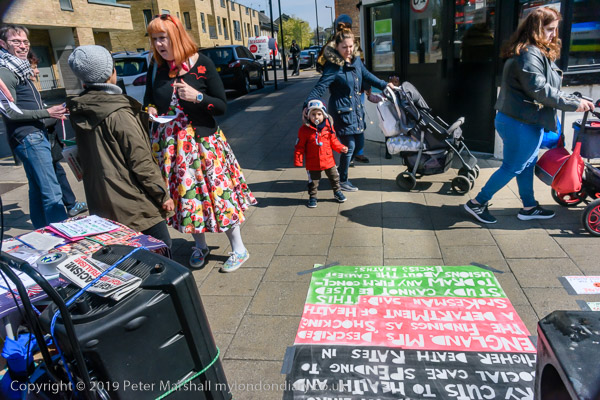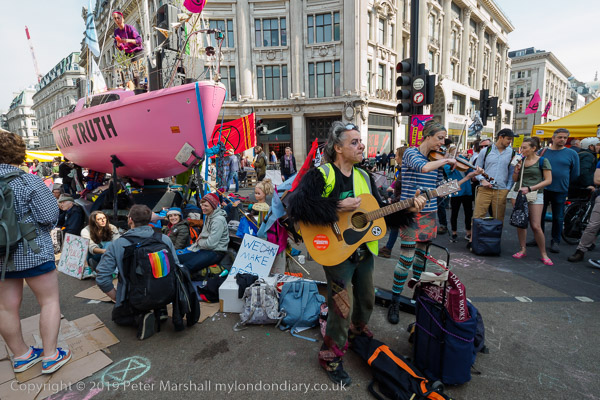
I don’t go out of my way to photograph celebrities. Often another photographer will point out someone to me and they are people I’ve never heard of, and certainly wouldn’t recognise. One of the delights of not owning a television is that it keeps your mind clear of such clutter, though it has occasionally meant I’ve missed taking pictures that would have sold well.
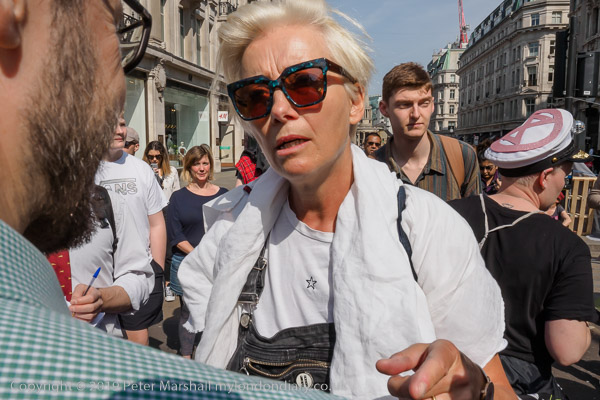
But of course I do have some idea of who Emma Thompson is and what she looks like, though I hadn’t known she would be arriving to speak at Oxford Circus before I got there on April 19th and a colleague shared this information. I’d gone to Oxford Circus simply to photograph the XR occupation of the area around the large pink yacht, the Berta Cáceres, and the other sites still blocked by the protests,
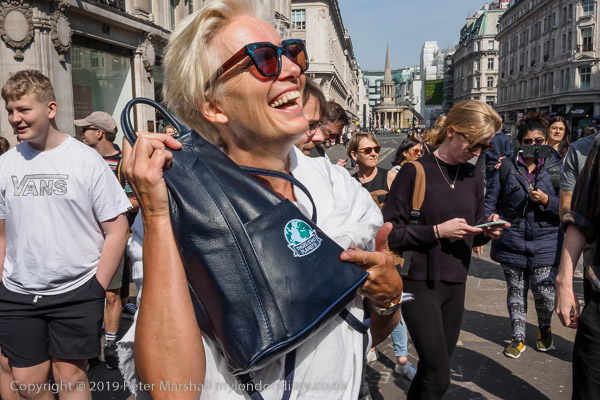
I saw her arrive before most of the other photographers and was able to take a few pictures before she was surrounded by a crowd of people with cameras, including one of her showing off her ‘There is no planet B’ bag.
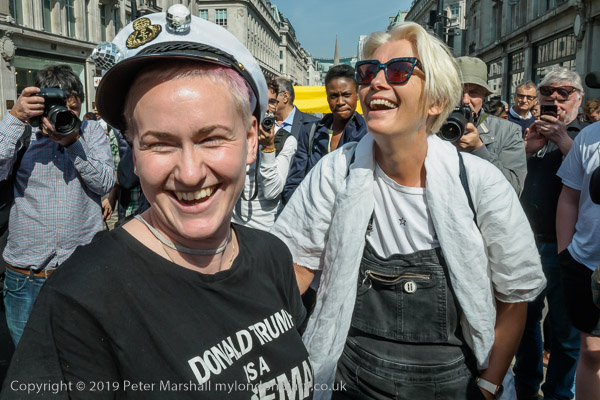
Soon other photographers realised she had arrived, but there wasn’t room for them where I was between her and the boat, so there was a ring of photographers all pointing there lenses at her back while I was taking her picture with a member of the crew. I realised she was going to have to wait and then climb up the ladder onto the boat after the singer currently performing came down and moved to where I thought I would be best placed for more pictures – a few of which you can see on My London Diary.
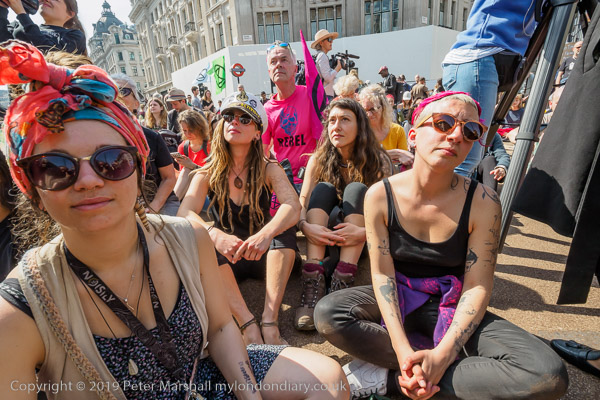
Of course I moved into the crowd in front of the boat as she spoke, to take more pictures of her, but mainly of the people listening. After she had spoken to the crowd, she did speak to a couple of TV crews from the back of the boat and I did take a few more pictures, but I was more interested in the pep[;e who were surrounding the Berta Cáceres, some locked on, to protect the boat from being moved.
I then made the mistake of leaving Oxford Circus to look at something happening elsewhere, but after a brief look I came back to find that police had moved in and began the long process of clearing the road junction. More about that in a later post.
More pictures at Emma Thompson speaks at XR
All photographs on this and my other sites, unless otherwise stated, are taken by and copyright of Peter Marshall, and are available for reproduction or can be bought as prints.
There are no adverts on this site and it receives no sponsorship, and I like to keep it that way. But it does take a considerable amount of my time and thought, and if you enjoy reading it, please share on social media.
And small donations via Paypal – perhaps the cost of a beer – would be appreciated.
